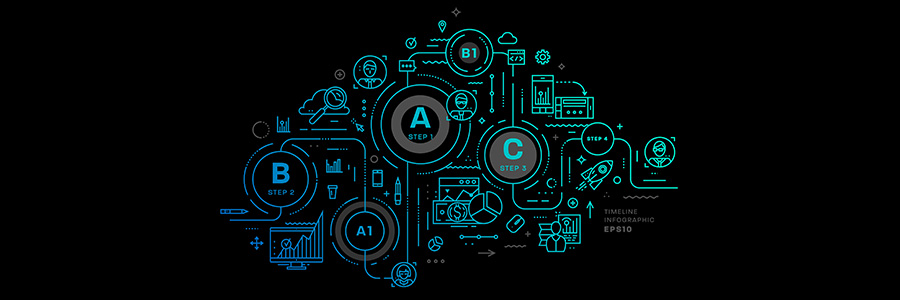 Does filling in web forms sap all your browsing energy? Do you find it especially taxing to shop or register online using a mobile device? Google’s Chrome alleviated this dilemma when it introduced the Autofill feature in 2011, which made filling in forms much faster and making credit card purchases online more convenient. Unfortunately, it didn’t take that long for cyberthieves to find a way to take advantage.
Does filling in web forms sap all your browsing energy? Do you find it especially taxing to shop or register online using a mobile device? Google’s Chrome alleviated this dilemma when it introduced the Autofill feature in 2011, which made filling in forms much faster and making credit card purchases online more convenient. Unfortunately, it didn’t take that long for cyberthieves to find a way to take advantage.
How do they do it?
By concealing other fields in a sign-up form, users are tricked into thinking they only have to fill out a few fields. The trickery at work is that upon auto-sign up, other fields, which could include your billing address, phone number, credit card number, cvv (the 3-digit code used to validate credit card transactions), and other sensitive information, are auto-filled with the user none the wiser.
This sinister trick is nothing new, but since there hasn’t been any countermeasure since it was first discovered, the threat it poses is worth emphasizing. Finnish whitehat hacker Viljami Kuosmanen recently brought to light how users of Chrome and Safari are particularly vulnerable, and he even came up with a demonstration of how this phishing technique is perpetrated. The technique is so sneaky, it’s enough to make one give up online shopping forever.
Using plugins and programs such as password managers is also fraught with the security risk, as having access to such a utility empowers cyberthieves to do more than just obtain your credit card info; it opens them up to a great amount of personal details.
Preventing an autofill-related theft
So what can you do to avoid falling prey?
Using Mozilla Firefox is one of the easiest available solutions. As of today, Mozilla hasn’t devised a mechanism that affords its users the same convenience that Chrome and Safari users enjoy with autofill. When filling web forms on Firefox, users still have to manually pre-fill each data field due to a lack of a multi-box autofill functionality – a blessing in disguise, given the potential for victimization in autofill-enabled browsers.
Another quick fix is disabling the autofill feature on your Chrome, Safari and Opera (for Apple mobile devices) browsers. This would mean that when filling out web forms, you’d have to manually type responses for every field again, but at least you’d be more secure.
It’s not exactly the most sophisticated form of online data and identity theft, but complacency can result in being victimized by cyber swindlers. Take the first step in ensuring your systems’ safety by getting in touch with our security experts today.



 Investing in customer relationship management (CRM) software is absolutely essential for small- and medium-sized businesses that want to up their sales performance. It helps sales departments understand their clients, tailor their marketing efforts, and more. If your business isn’t already using CRM, here are five reasons why you should definitely give it a chance.
Investing in customer relationship management (CRM) software is absolutely essential for small- and medium-sized businesses that want to up their sales performance. It helps sales departments understand their clients, tailor their marketing efforts, and more. If your business isn’t already using CRM, here are five reasons why you should definitely give it a chance.
 As cyber attacks continue to rise, businesses large and small need to stay one step ahead with IT services that keep them protected no matter what. What once were minor nuisances have now become advanced threats that can actually put you out of business. In fact, these cyber attack statistics will prove to you that you need managed services from a technology provider to remain safe and competitive.
As cyber attacks continue to rise, businesses large and small need to stay one step ahead with IT services that keep them protected no matter what. What once were minor nuisances have now become advanced threats that can actually put you out of business. In fact, these cyber attack statistics will prove to you that you need managed services from a technology provider to remain safe and competitive.
 When disaster strikes, organizations need to put their business continuity plans into action and recover their IT systems as quickly as possible. Failing to do so can mean serious financial and reputational repercussions. Despite this, investments in disaster recovery are set aside each year for high-tech IT investments, and every year companies and employees continue to suffer for it. Here are some reasons why disaster recovery is well worth your time, effort, and resources in 2017.
When disaster strikes, organizations need to put their business continuity plans into action and recover their IT systems as quickly as possible. Failing to do so can mean serious financial and reputational repercussions. Despite this, investments in disaster recovery are set aside each year for high-tech IT investments, and every year companies and employees continue to suffer for it. Here are some reasons why disaster recovery is well worth your time, effort, and resources in 2017.
 Skype used to dominate an area of VoIP communications that serves a special function: group video calling. With apps like Snapchat, WhatsApp and, most recently, Slack nipping at its heels, it comes as no surprise that social network behemoth Facebook takes a slice of the cake with its recently rolled out desktop group voice calling. With this functionality, anyone who has ever participated in a Facebook-enabled conversation should embrace this new development.
Skype used to dominate an area of VoIP communications that serves a special function: group video calling. With apps like Snapchat, WhatsApp and, most recently, Slack nipping at its heels, it comes as no surprise that social network behemoth Facebook takes a slice of the cake with its recently rolled out desktop group voice calling. With this functionality, anyone who has ever participated in a Facebook-enabled conversation should embrace this new development.